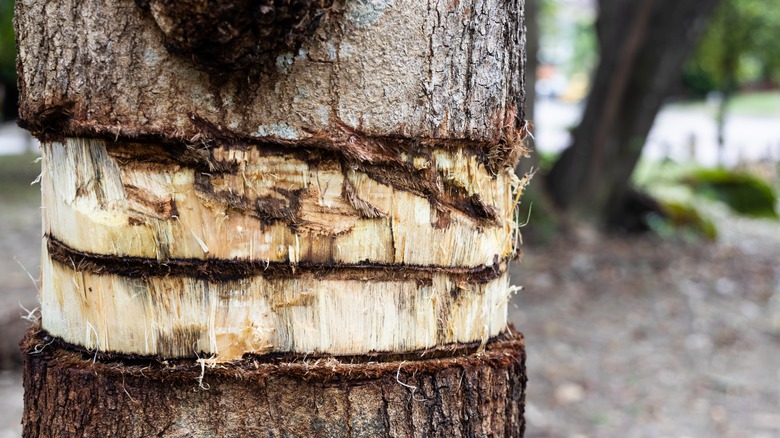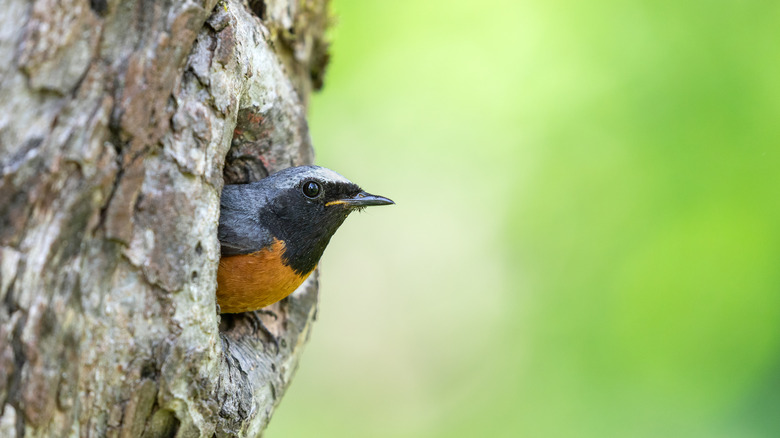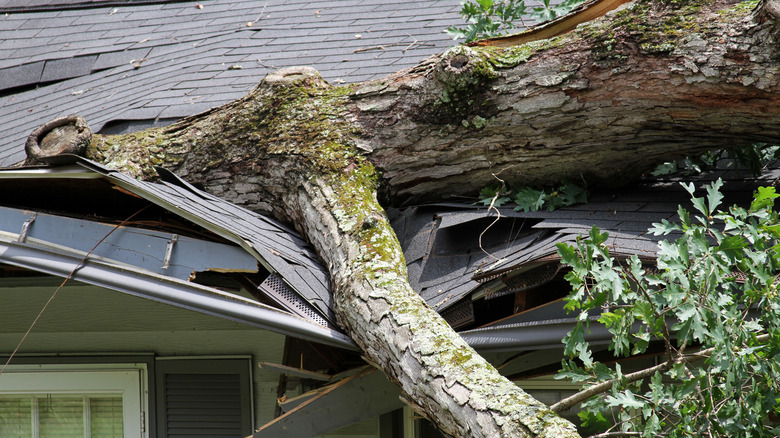The Benefits Of Girdling A Tree Vs. Cutting It Down
Trees are an indispensable part of our society and ecosystem. Not only do they beautify our environment, but they help to purify the air we breathe and the water we drink. Unfortunately, sometimes circumstances call for trees to be put down and killed. While most people think of completely felling a tree with a cutting tool, girdling it is another great option if cutting it down outrightly would have more of a negative impact on the surrounding space.
Trees need to be put down for all kinds of reasons. A sick tree would need to be killed in order to prevent the disease from spreading out to other trees and vegetation in the surrounding area. Sometimes, trees that don't contribute to a town's layout would also have to be taken care of. There's also the issue of nutrient and sunlight competition of many trees in a limited space which would require some trees to be removed to allow the others to flourish. Girdling would allow for a smooth transition for these trees and the wildlife in the environment.
Girdling a tree refers to the method of removal where the tree is severed from the vascular systems that give it life, meaning the internal nutrient and water channels otherwise known as the phloem and xylem. This leads to the tree dying a slower death than if you had just chopped it down to begin with. There are several reasons why this would be a favorable option to go along with.
Girdling allows wildlife in the area to use the dead tree
Cutting a tree down to a stump means the end of its stem and branch system. While this may not mean much to you, it does mean something to the animals that either live on or in the tree, or use the tree somehow in their daily activities. Girdling the tree would ensure that these animals still have a place to call home while rendering the tree incapable of taking in nutrients and being a burden to the environment.
Chopping down trees also has a negative ecological impact on the ground, causing erosion especially if you garden on slopes, riverbanks or roads. Without the tree roots acting as a protective cover for the soil, it becomes susceptible to erosive elements like rainfall and wind. With girdling, the tree is allowed to perish slowly and remain standing so that the topography of the ground stays the same. This would prevent erosion from occurring.
Another scenario that makes girdling trees a preferable approach to cutting it down is if you want to control their growth without completely killing off the plant. This can be achieved by not girdling the full circumference of the tree and just girdling part of it. That way, you can stem the flow of nutrients, reducing it by a considerable fraction, and allow the nearby trees and plants to benefit from the extra nourishment. This is a suitable method for trees that are hoarders by nature.
Girdling is best done in a controlled area void of thriving crops
One of the foremost disadvantages of girdling a tree as opposed to felling it is that it's going to come crashing down eventually — you just don't know when. The wildcard suspense is the dangerous part. When you cut down a tree, you are controlling its movement to the ground and its final resting position. If you have a danger tree or one that is resting on arable farmland with crops on it, it's strongly advised that you chop it down and not girdle it. This goes for trees in work areas and residential places as well. You don't want an unpredictable girdled tree falling on your harvest, house, or worse — on someone — out of nowhere.
You also have to consider the fact that some trees just aren't cut out for girdling because they're too resilient. Hardy trees such as those of the maple variety won't easily succumb to the severing of their wood and cambium. They must be cut down if they pose a threat to their environment. Nevertheless, the option of girdling a tree versus cutting it down is pretty much ideal for plenty of circumstances as long as the tree is in a controlled area.


